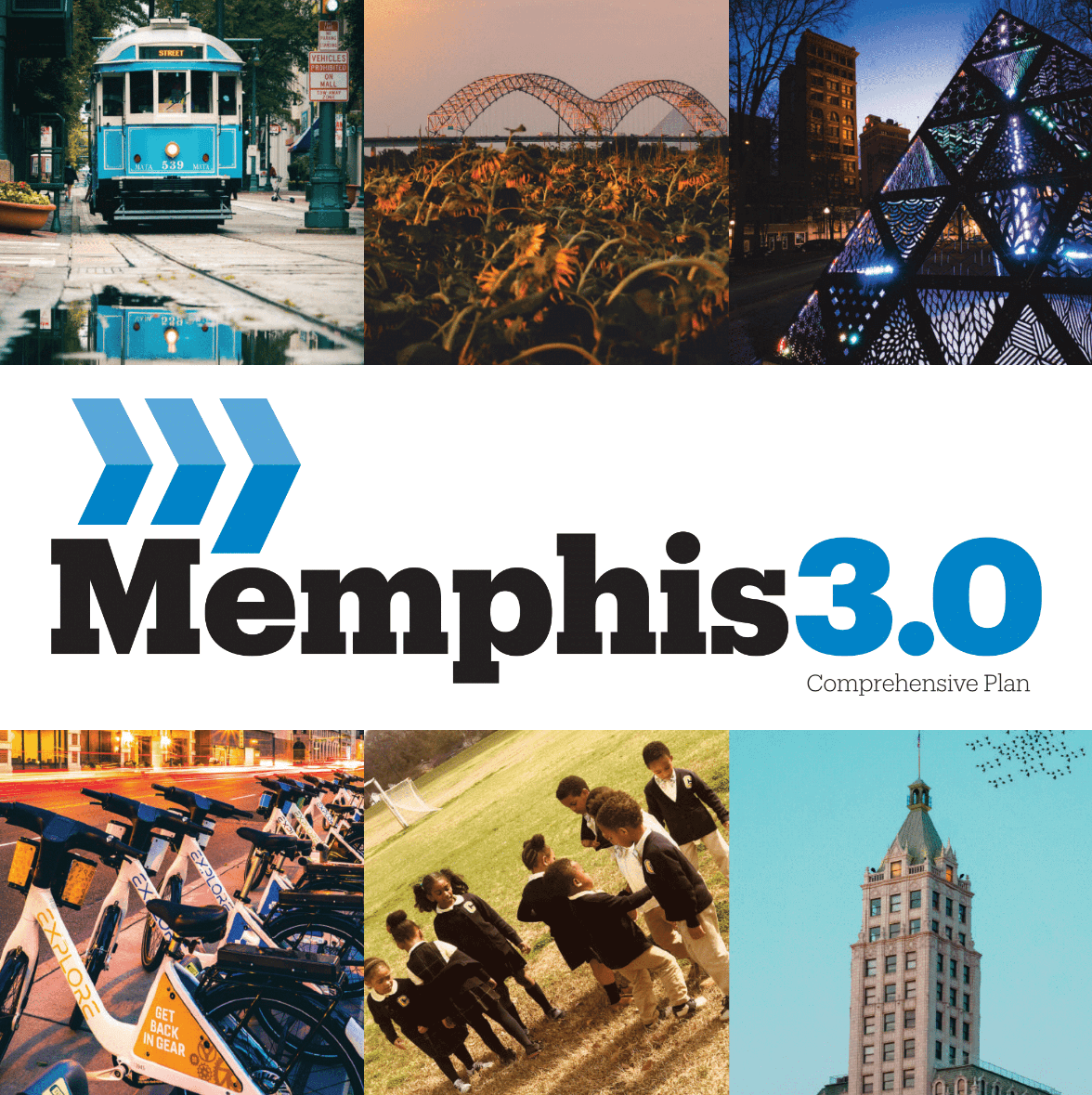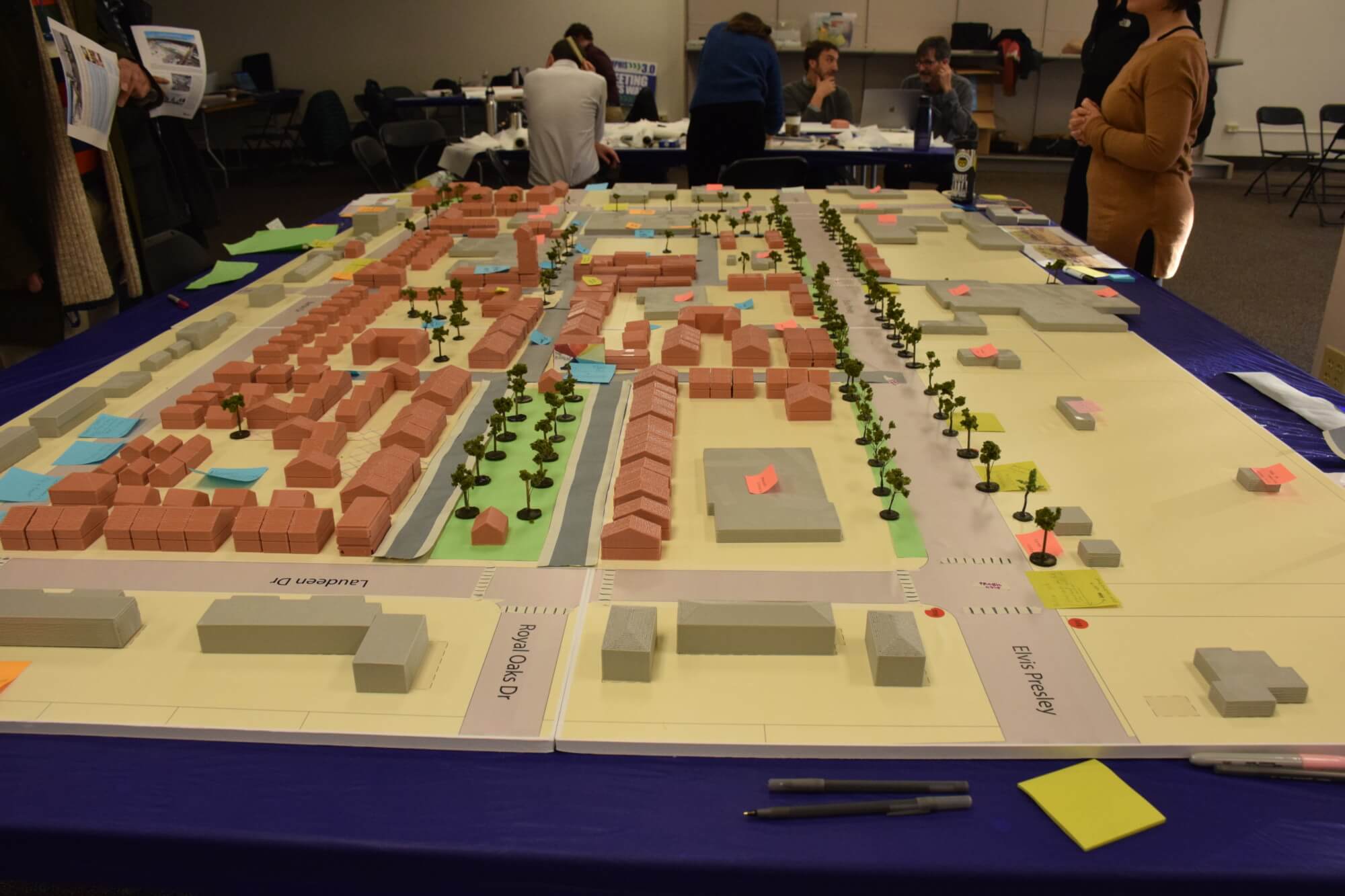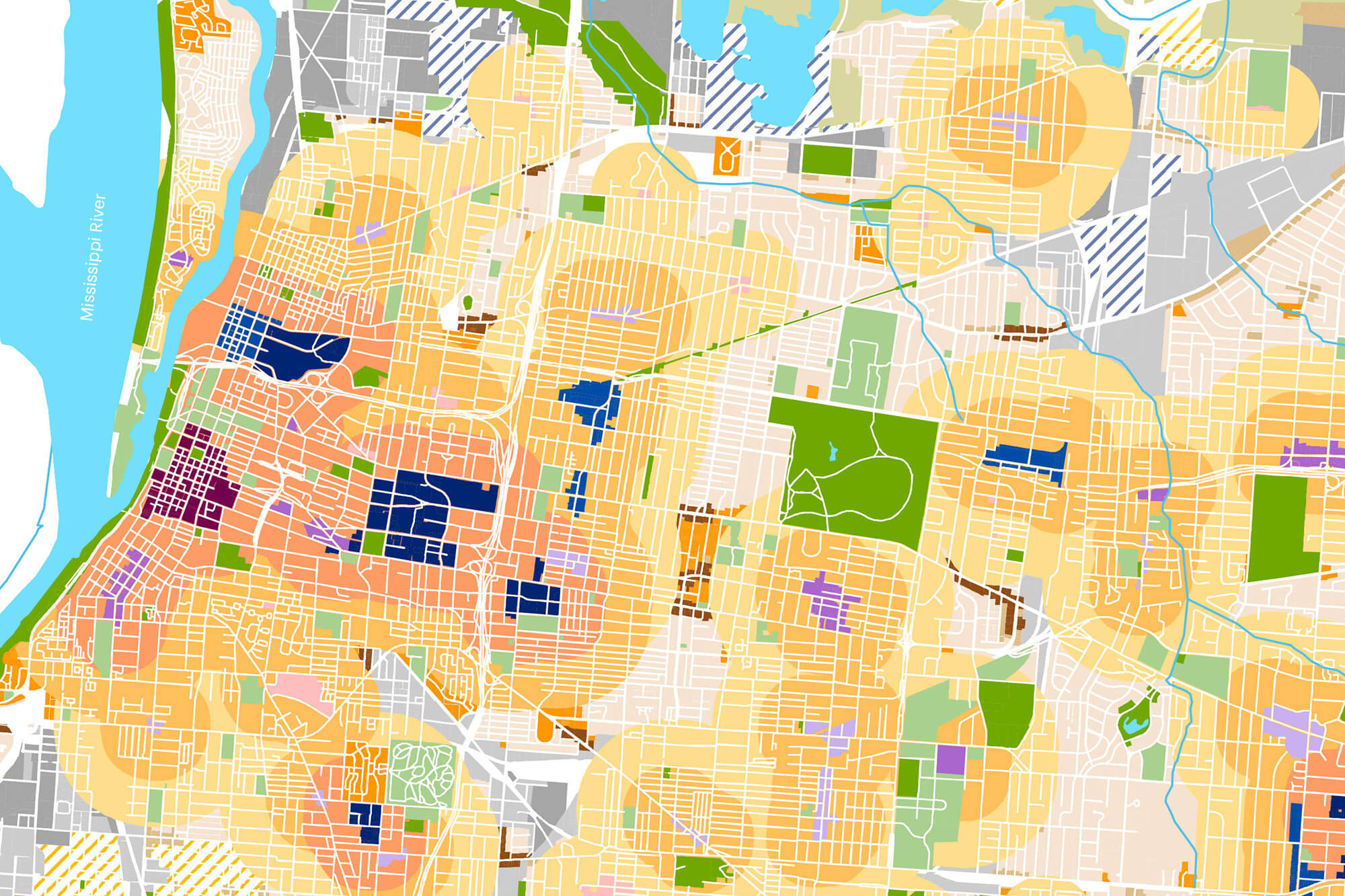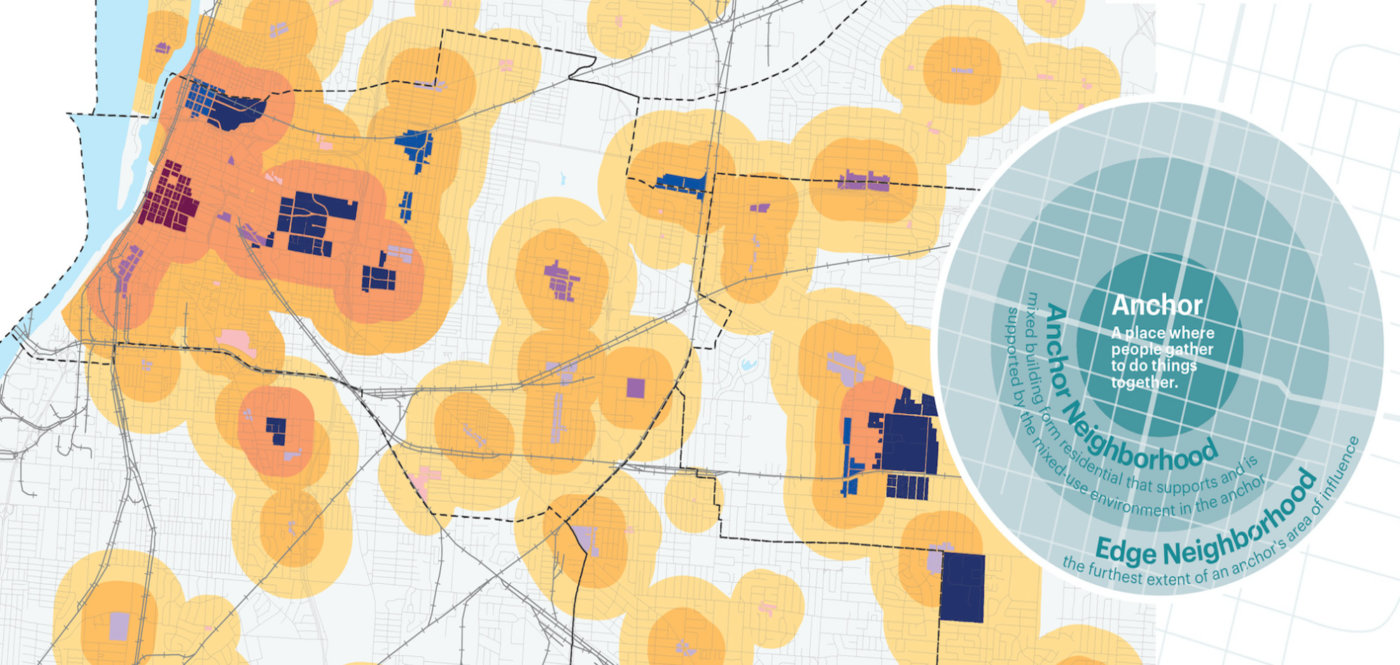-
Award
2022 TAPA Award for Outstanding Implementation; APA Award — Daniel Burnham Award for a Comprehensive Plan; 2021 CNU Charter Award — Metropolis, City, and Town
-
Size
324 square miles
-
Community Gathering Spaces
9,145 Acres of Parkland; 100 Miles of Greenways
-
Community Engagement
15,000+ Memphians
Memphis 3.0 Comprehensive Plan
Memphis, TN
In anticipation of its 200th Anniversary, the City of Memphis partnered with a team led by Opticos Design to update their citywide Comprehensive Plan for the first time in 40 years and set a new course for development and change in the City. Memphis 3.0 aims to kick-start Memphis’ third century by reversing a pattern of development that has failed to deliver benefits and quality-of-life improvements in an equitable way, while building community trust in the City’s ability to improve the lives of all Memphians.
To oversee the creation of the Comprehensive Plan, the City of Memphis established a new Office of Comprehensive Planning. After 40 years of sharing a planning department with Shelby County, the public engagement strategy for the Comprehensive Plan provided transparency into the planning process and built long-term relationships that would sustain public support for the new department.


Building Community Support for the Long Term
With the support of public-engagement expert and founder of the National Charrette Institute Bill Lennertz, the project team developed a public engagement roadshow that brought a series of workshops to each of the 14 planning districts within the City of Memphis. Opticos designed templates for “community planning workbooks” and other collateral to be easily customized by City staff for each district. These materials helped community members understand the planning process and streamlined the collection of input from the nearly 15,000 Memphians who contributed to the project. Local architectural firms and organizations in Memphis including Self+Tucker Architects, brg3s Architects, the University of Memphis Design Collaborative, and Ray Brown Urban Design worked with City staff to conduct the workshops and compiled district reports for each of the 14 planning districts.
This strategy was developed in response to limited resources and an understanding that the City staff and local consultants, who would provide long-term ongoing planning support, were best suited to build community relationships through the district workshop process. With almost 20 years of experience working around the globe, Opticos provided both strategic support and a proven, place-based approach to planning for change in communities. The teaming of City staff with local and national consultants brought a range of experiences and capacities to the project in a manner that emphasized relationship-building between the community and those members of the team who were most likely to be engaged in the long-term.
Focused on Equity
Business-as-usual in Memphis meant that well-off communities benefited most from development and investment, leaving those neighborhoods most in need of resources to struggle with chronic disinvestment. Opticos worked with the City to develop a land use strategy that directs public investments to disinvested places in need of stabilization and to places where public investments are most likely to catalyze additional private investment in the future. The resulting place-based land use map focuses future growth and investment around mixed-use centers identified by the community as “community anchors” that help to stabilize neighborhoods and serve as nodes of community activity and identity.
A “Degree of Change” map provides a framework for prioritizing investment based on land use and urban form, existing conditions, and individual communities’ desire for change. “Change Actions” calibrated to each of the three different Degrees of Change provide paths towards implementing the Land Use plan and offer clarity into how investments can be prioritized to strengthen the anchor and create a more dynamic place that supports the neighborhoods around it. Together, the Land Use map and Degree of Change map provide a vision for how and where Memphis will grow and how those changes will take place.

Anchoring Neighborhoods to Grow Up, Not Out
The vision for Memphis’ Comprehensive Plan states that “In its third Century, the City of Memphis will grow up, not out…” This means a change of course after decades of chasing sprawl through expensive annexations that ultimately destabilized the City’s finances. By densifying existing neighborhoods and centers—by “growing up” in these places—the City will be able to more efficiently provide services while focusing investments in denser areas where they can positively impact the greatest number of people.
By their very nature, community anchors are about more than just the centers of activity they represent—they exist in a symbiotic relationship with the neighborhoods around them. Community anchors are walkable, mixed-use places that help reinforce the social and economic connections that help support neighborhood resiliency in times of distress. They are places where people come together to do things. Memphis’ new plan supports them by providing a range of residential and mixed-use land use categories that encourage the types of intensity needed to activate community anchors and their surrounding neighborhoods while honoring the existing physical form and character that Memphians value in these places.
Integrating Economic Development and Urban Development
A critical piece of Memphis’ new Comprehensive Plan is the equitable economic development strategy prepared by Strategic Economics. This economic development plan integrates equitable economic policies with the anchor-based land use plan and degree of change map so that limited investment is effectively and efficiently enjoyed by the greatest number of Memphians. The economic development plan was developed concurrently with the Comprehensive Plan, so policies in each are informed by the other.
Implementing the Vision of Memphis 3.0
To put the Comprehensive Plan into action, Opticos collaborated with the City of Memphis and local firms Alta Planning + Design, Bass River Advisors, and Self+Tucker Architects in two small area planning charrettes that provide a vision for high-priority “community anchors.” The two charrettes provided an opportunity to consider community-based strategies for mixed-income neighborhoods and strengthen channels of communication between City staff and community stakeholders to ensure effective implementation.



